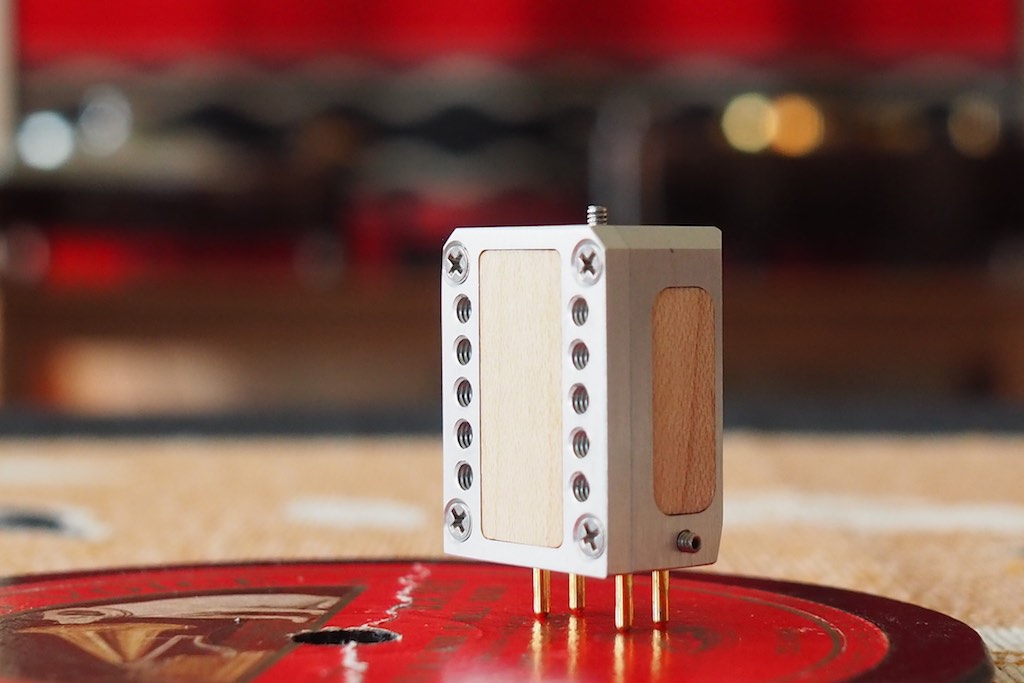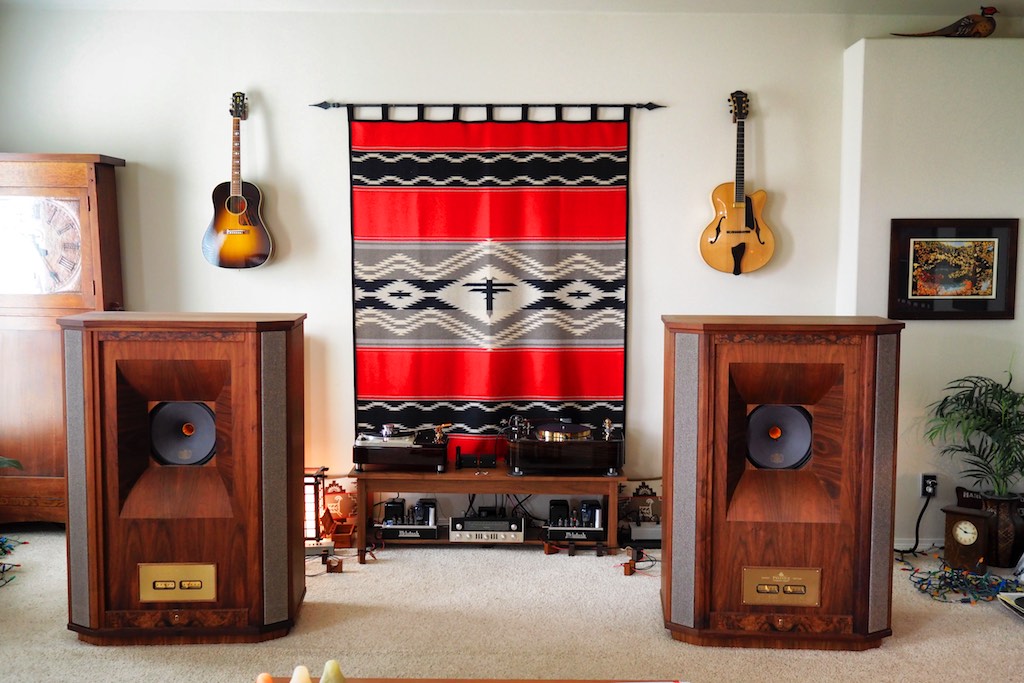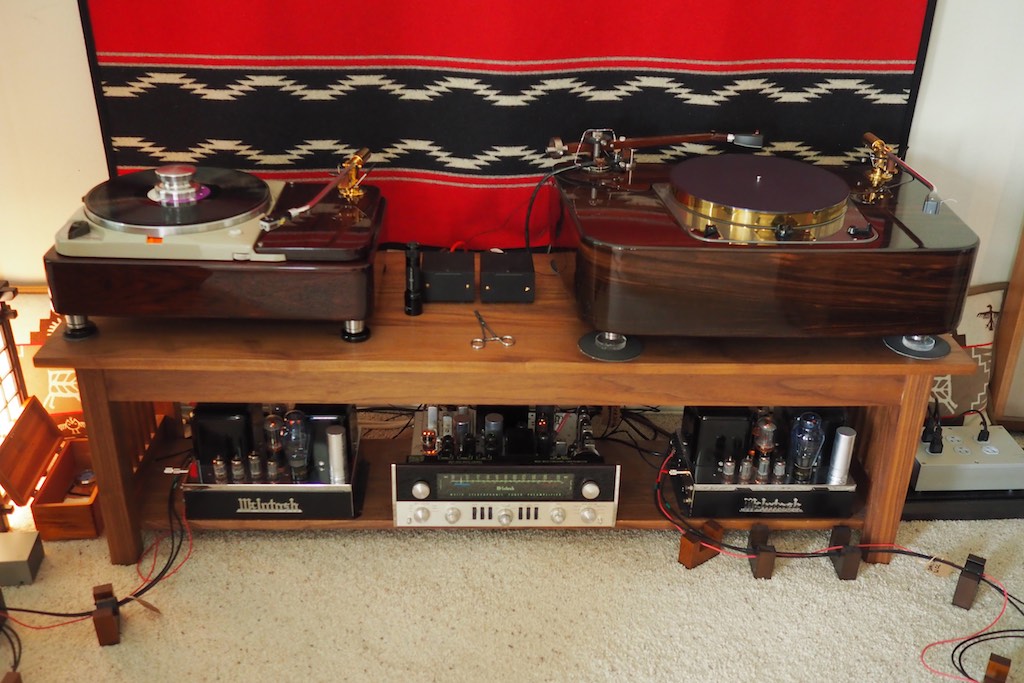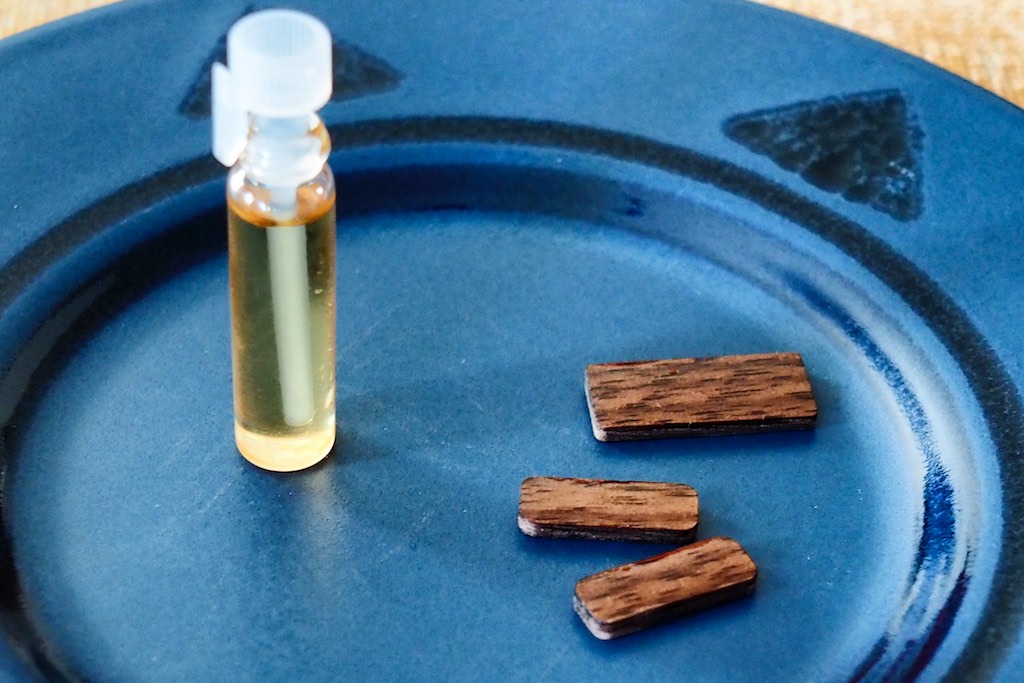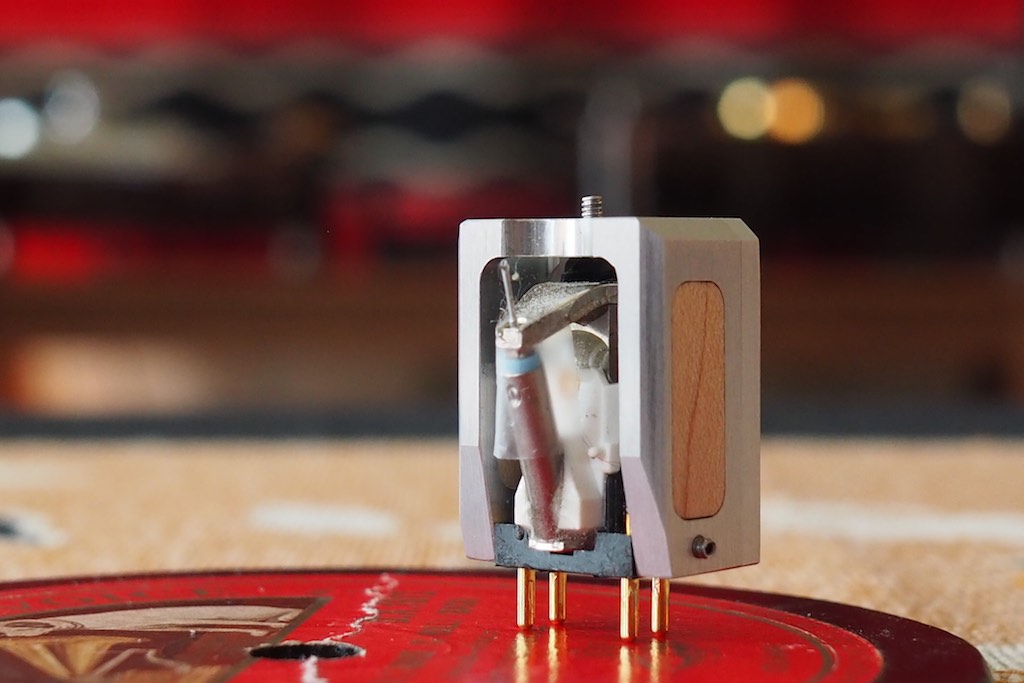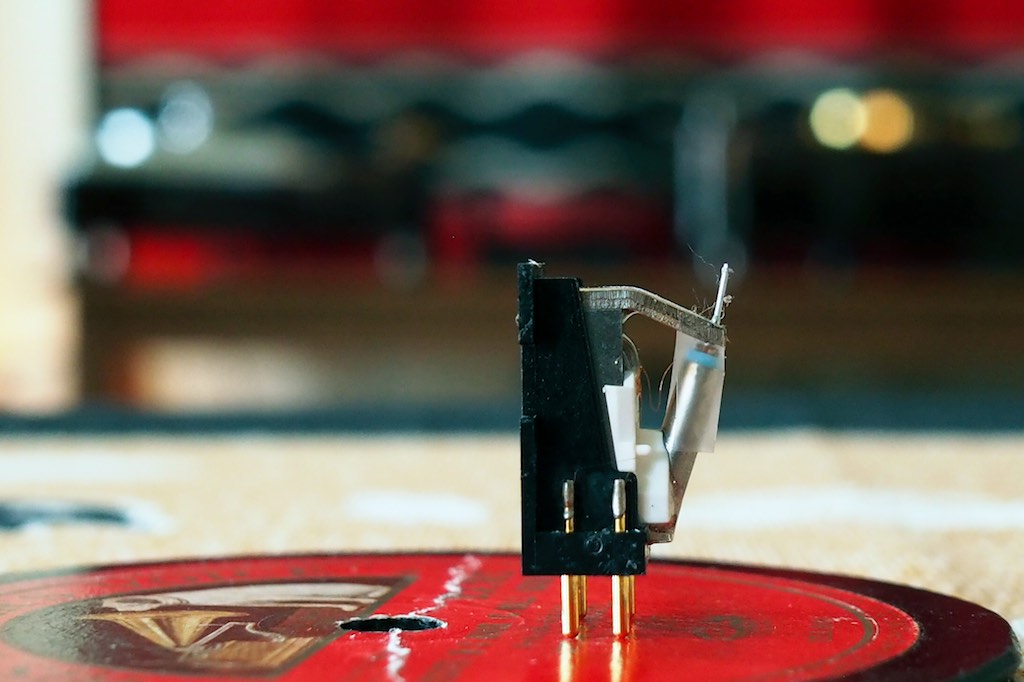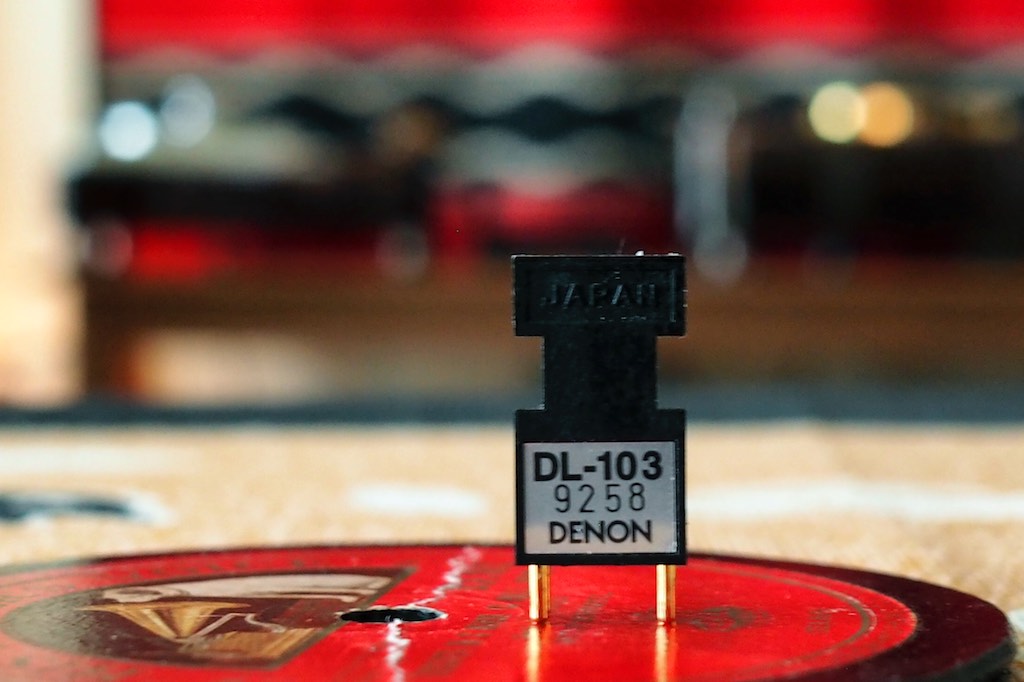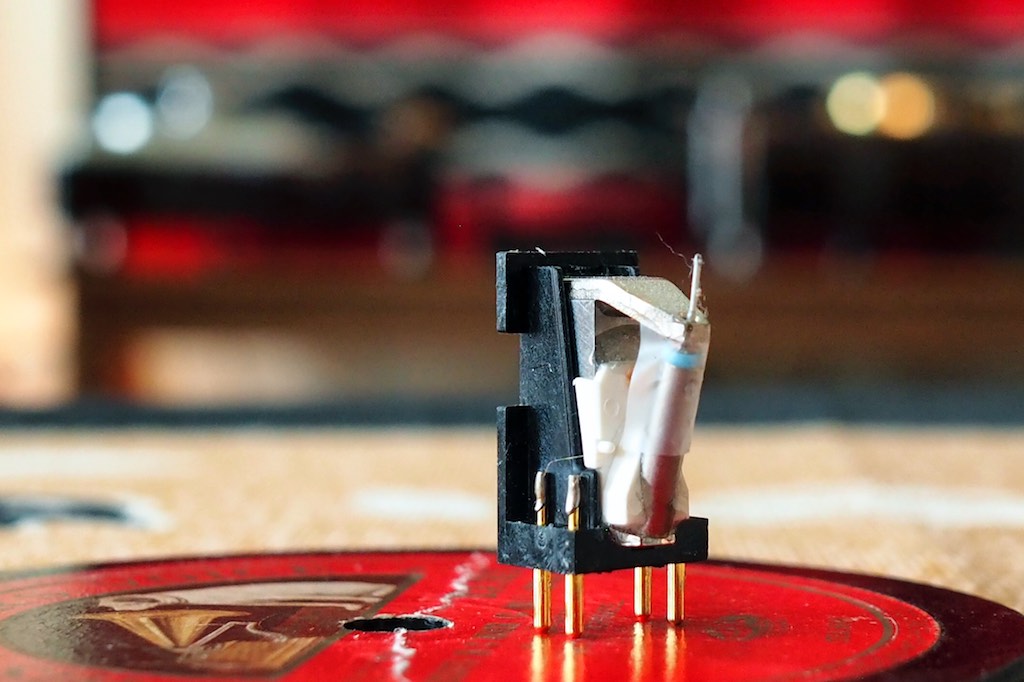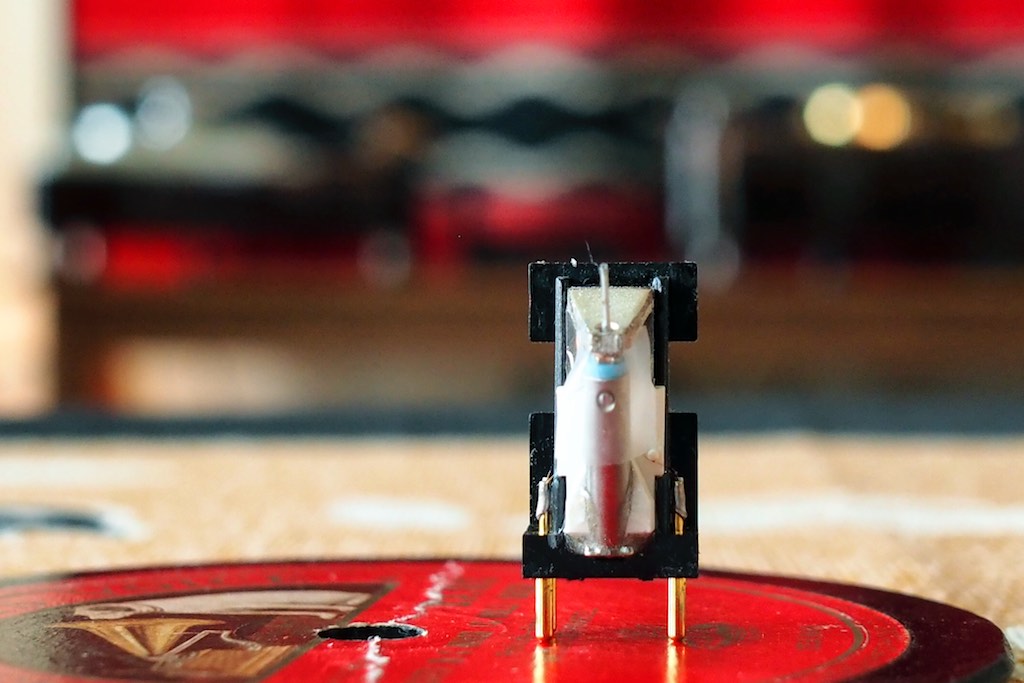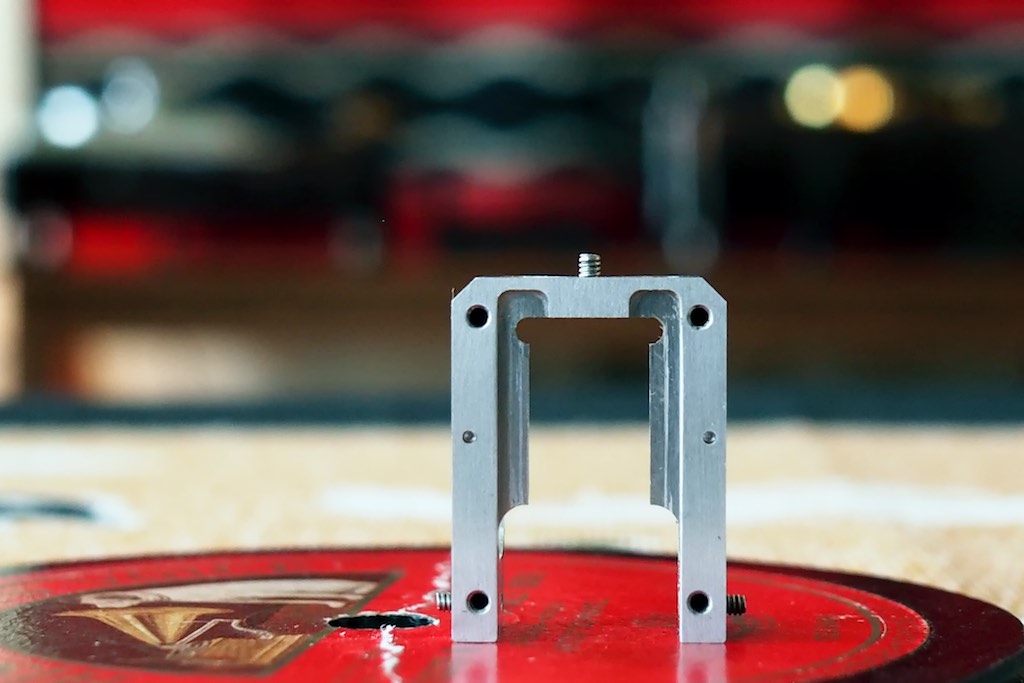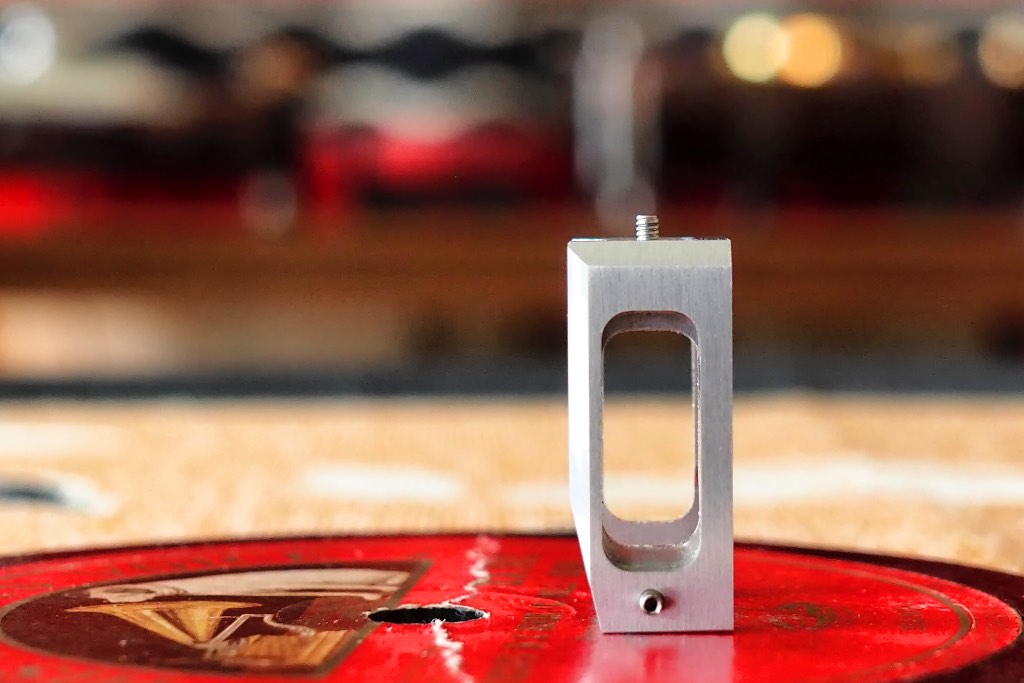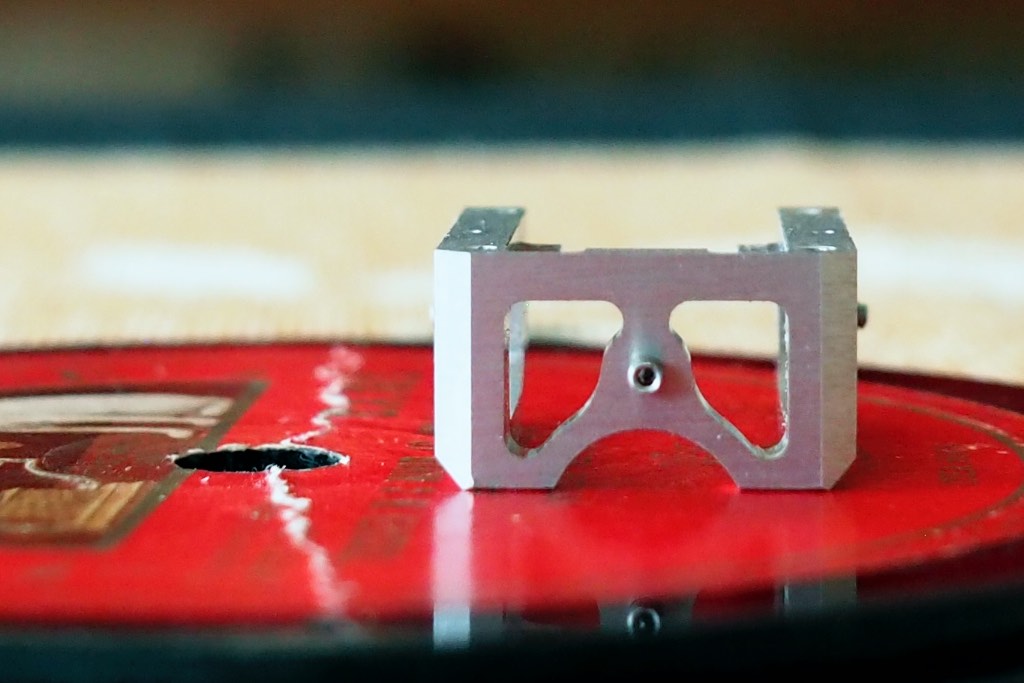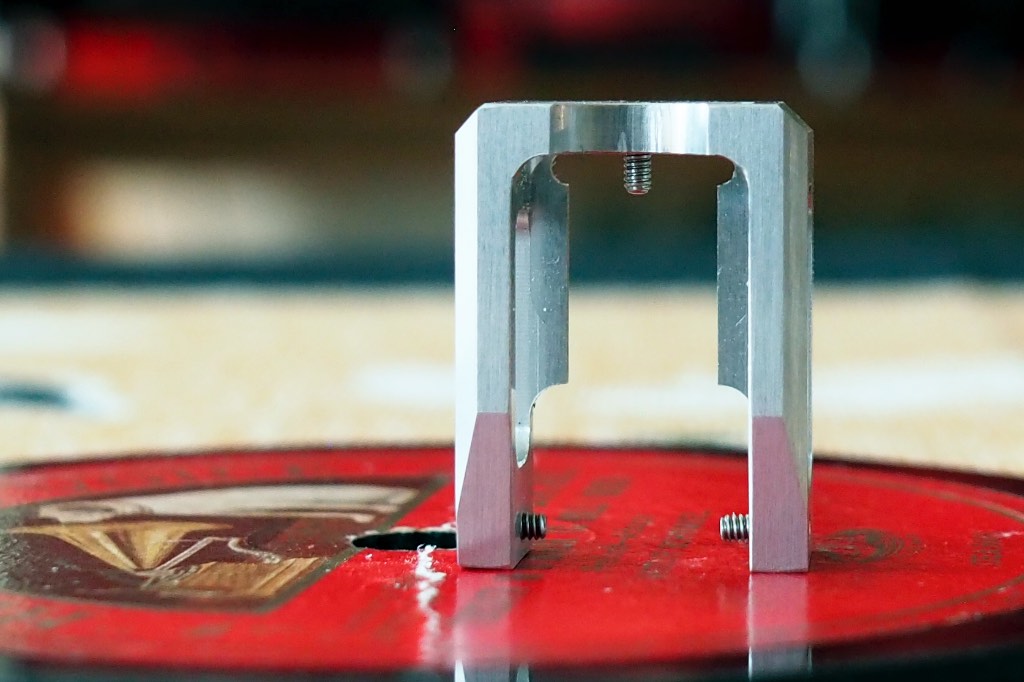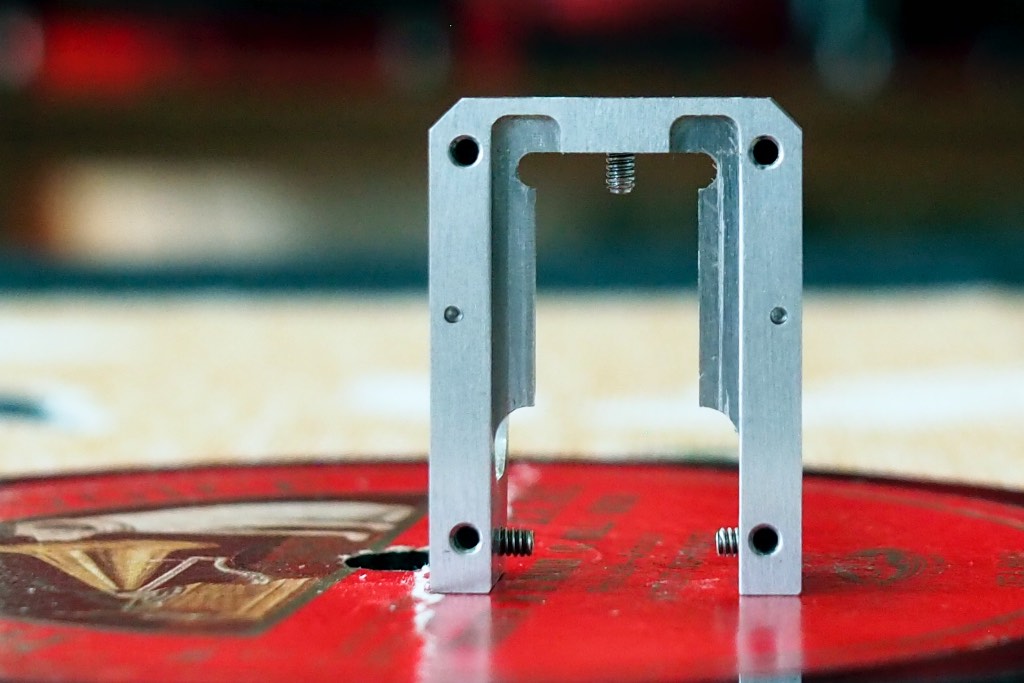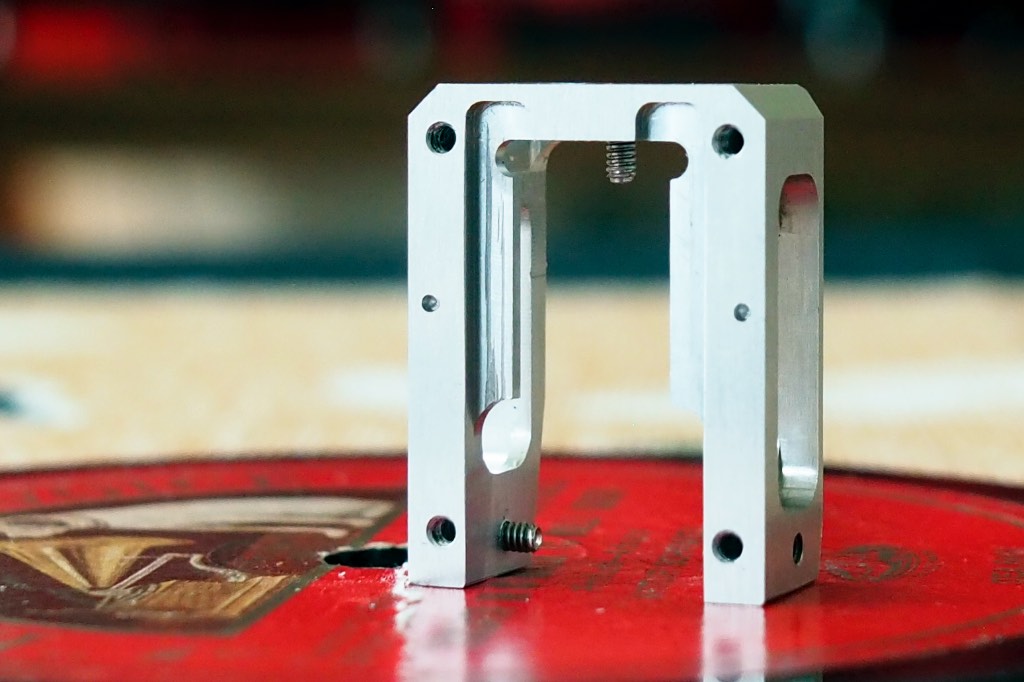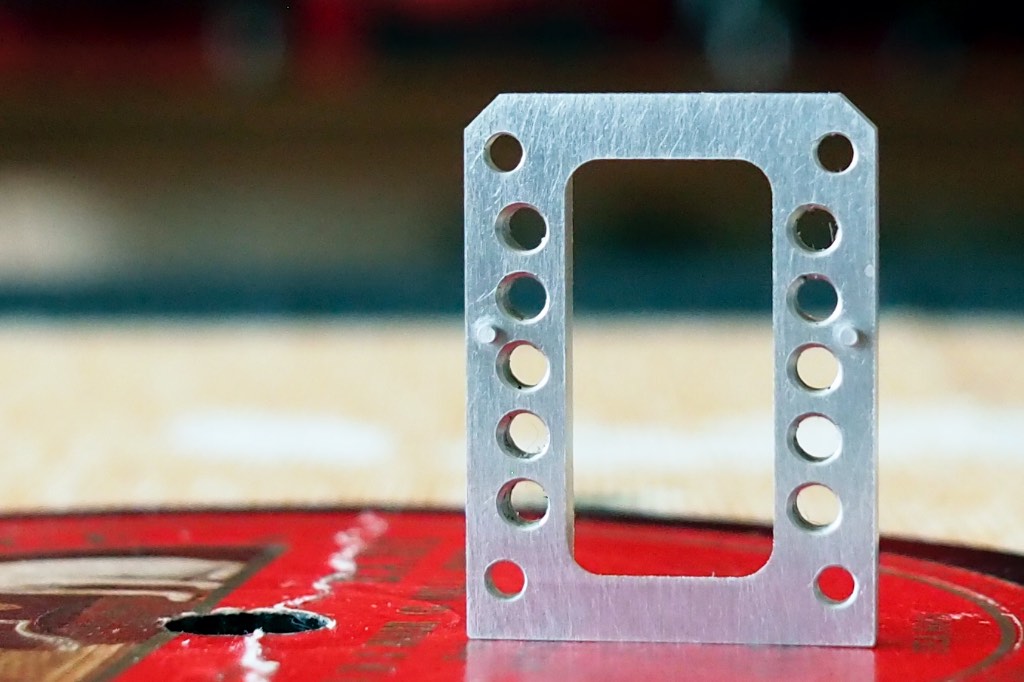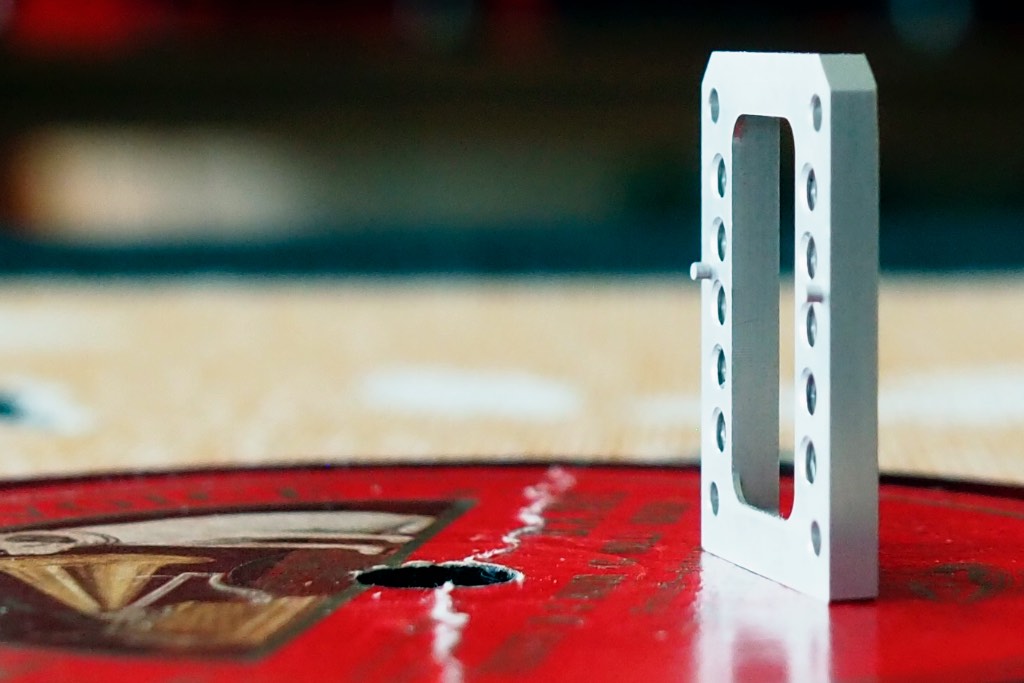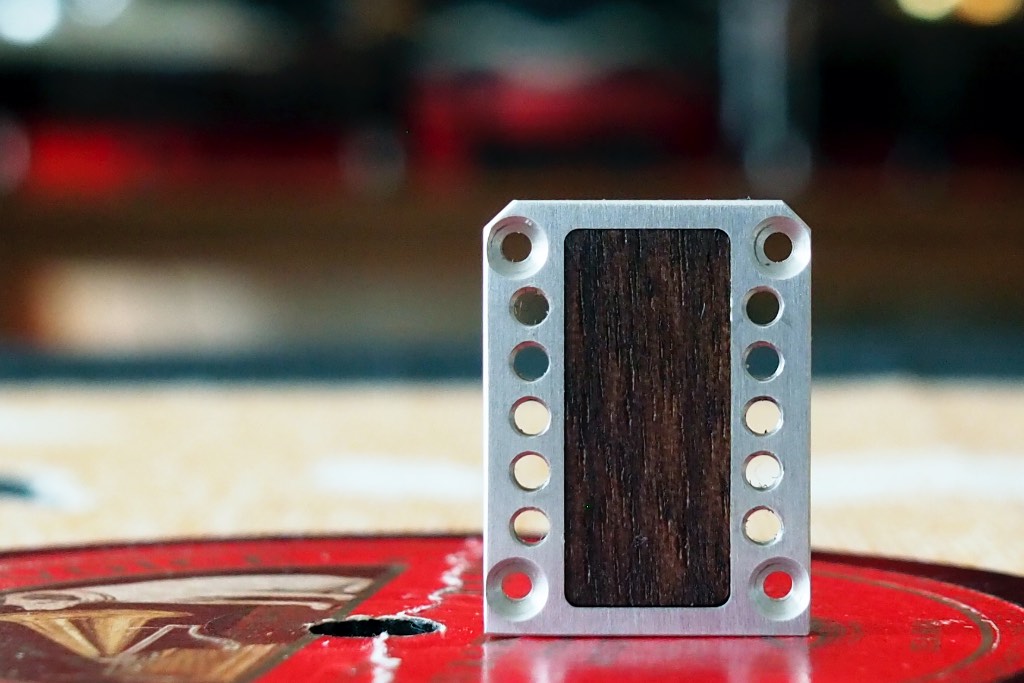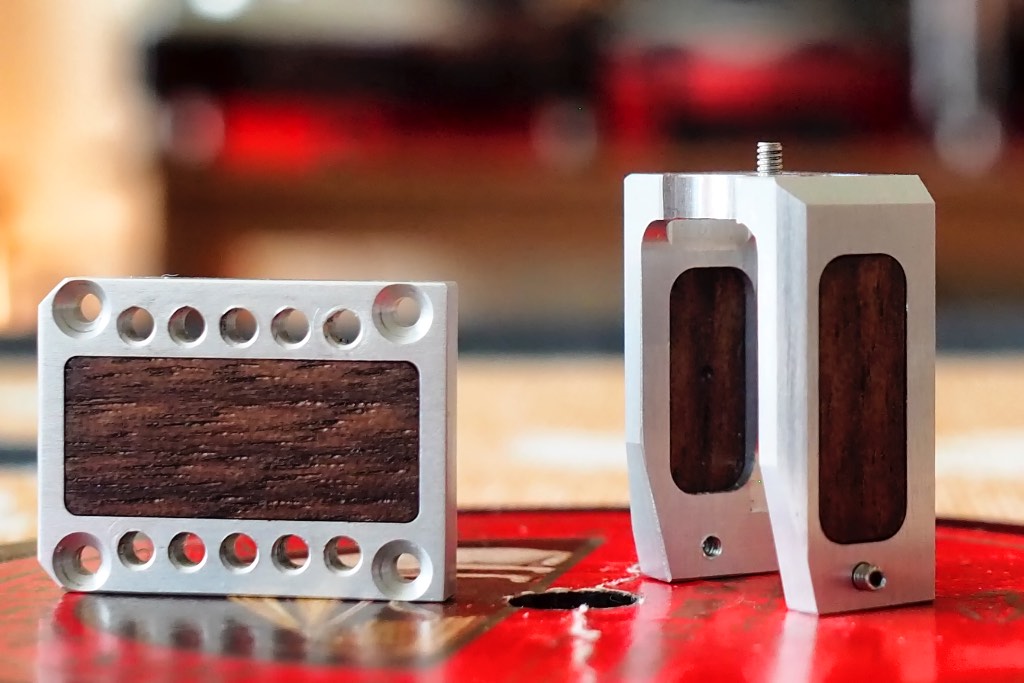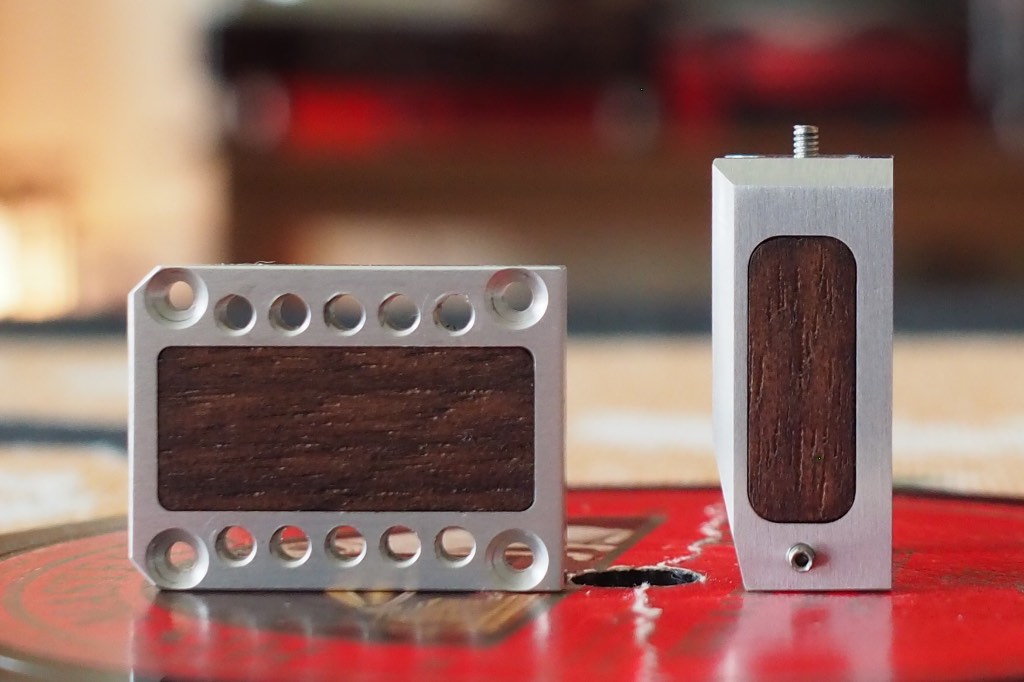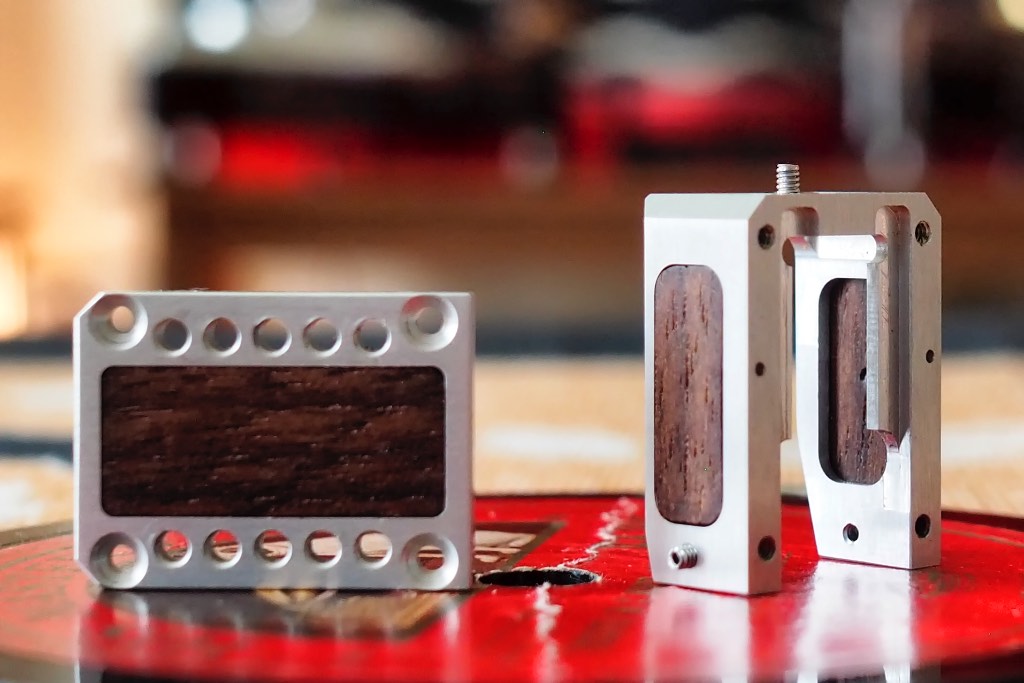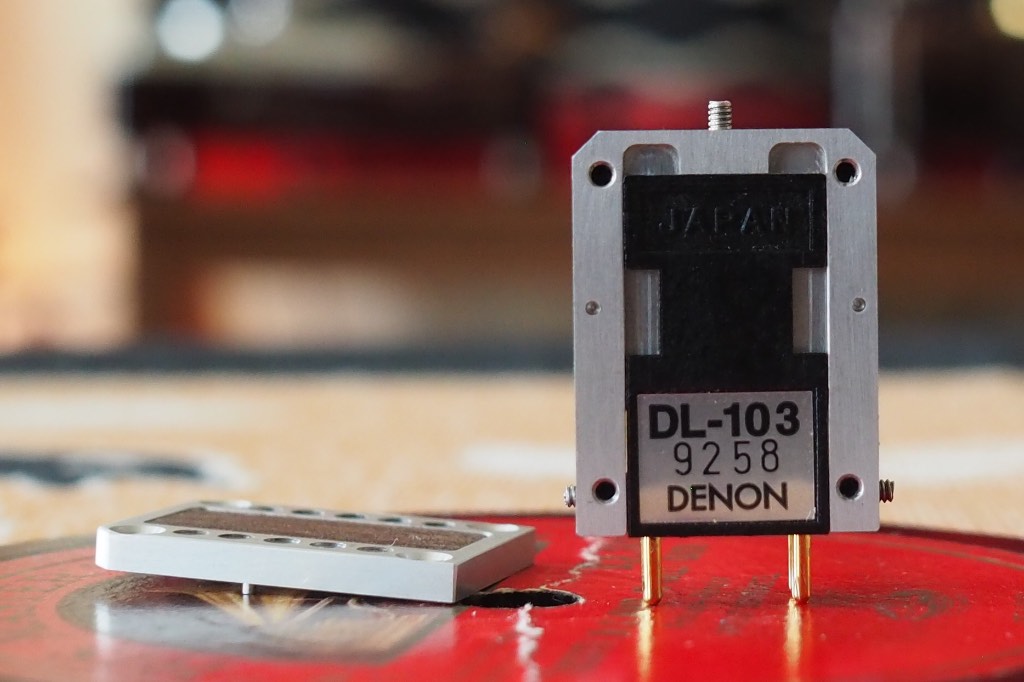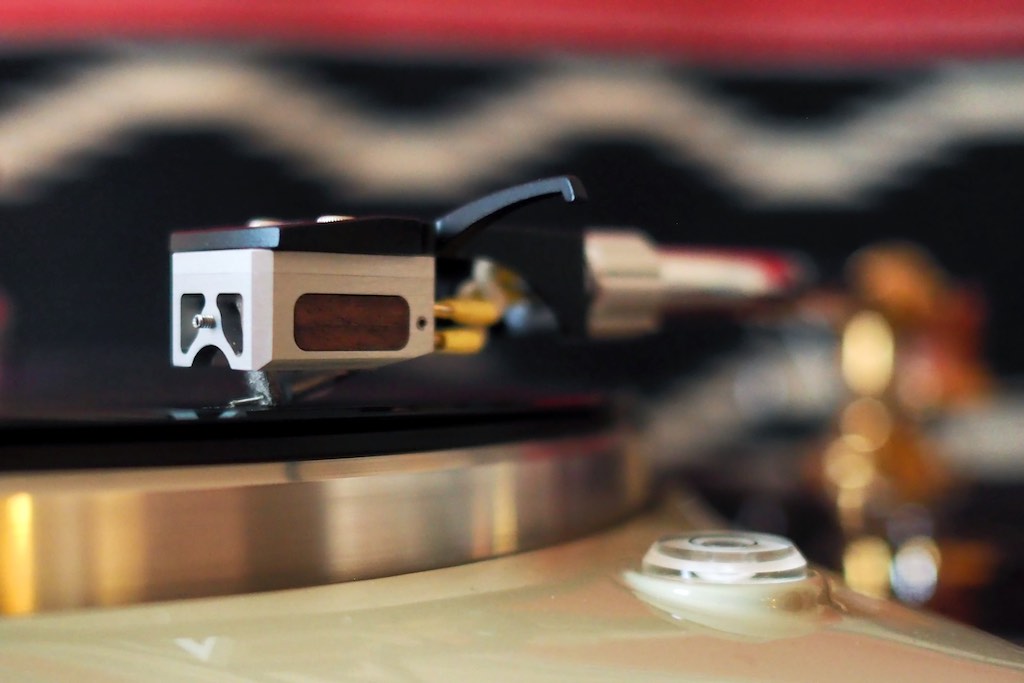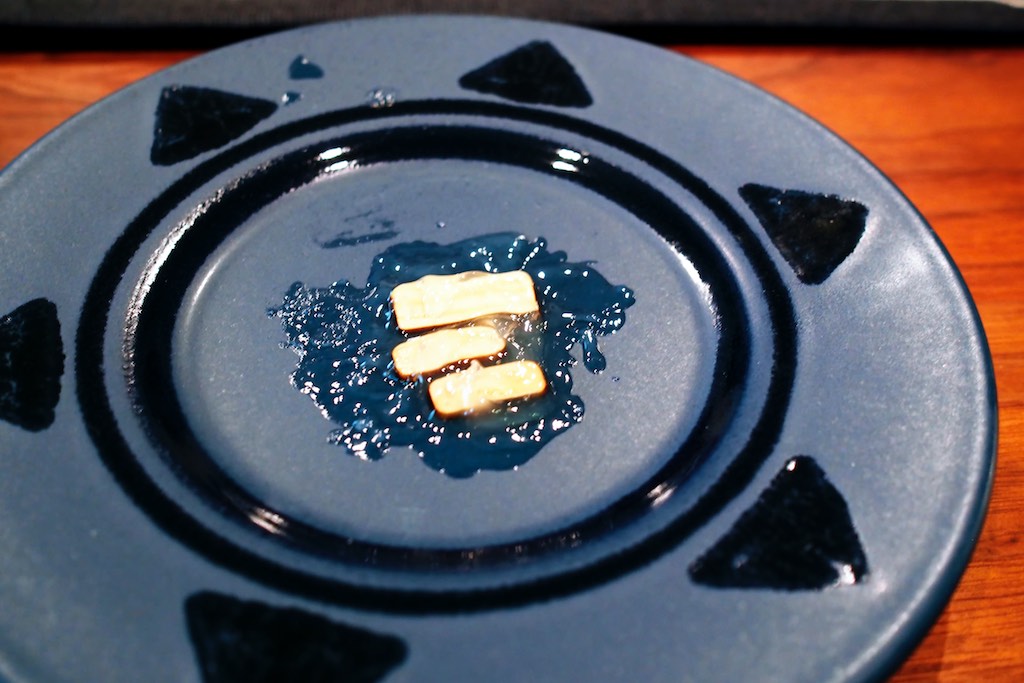When I left you in the "Third Tune" post, I had settled in on the maple "tonewood" inserts as having the tonality that was the most complementary to my main music listening system (below).
The maple set of tuning inserts was the first of the four sets of tonewood tuning inserts that I thought portrayed the tonality of muted trumpet realistically in my system, and that was without engaging and/or tensioning the tuning screws.
After I signed off writing for the evening, I experimented with the front & rear tuning screws and was able to improve a little bit more upon the overall tone in The Alternate Blues, giving an even more natural and realistic horn, bass, guitar, drums, and piano tone.
This Sunday morning I thought I'd try experimenting with a set of oil-treated black walnut tonewood inserts that I had prepared previously, and hear how they performed.
I picked the black walnut for oil-treatment first because it was my least favorite of the four sets of tonewood sets of inserts I listened to, and I wanted to hear what oil treatment could do for them.
Based on Guy's recommendation, here's the oil-treatment process I performed on the black walnut tuning inserts:
- I spread one pass of the supplied oil onto the front side of each piece of black walnut in the set.
- I waited for 1 hour, and then I removed the excess oil from the set of black walnut tuning inserts with a soft cotton polishing cloth.
- I then let the set of black walnut tuning inserts sit for 4 hours.
- Then I spread oil on all of the sides of the set of black walnut tuning inserts so that they were immersed in oil.
- I let the set of black walnut tuning inserts sit for one hour, and then I removed the excess oil with a cotton cloth.
- I repeat the step 5 oiling procedure two more times.
- Then I let the black walnut inserts sit for 24 hours.
- After 24 hours I remove the excess oil with a cotton cloth.
I dismounted the Audio MusiKraft cartridge with the maple tonewood inserts from my Thorens TD-124 turntable, and thought I'd try to get some closeup photos of it for you to look at so you could get a better feel for what the Audio MusiKraft Denon DL-103 is all about.
On the top of the cartridge shell (above) you can see the four corner screws that secure the top plate of the cartridge shell to the main body of the cartridge shell.
The top plate clamps the Denon DL-103 firmly in place inside the main body of the cartridge shell.
The 5 threaded inserts you see on each side of the top plate are for the headshell screws that secure the cartridge to the headshell.
Having 5 threaded inserts for headshell screws means you can more accurately position the cartridge in the headshell.
At the front of the cartridge you can see the micro-tuning screw that can be used to tension the front pole piece that secures the pole in place. It's a little hard to see, but towards the bottom of the cartridge photo you can see the rear pole piece that secures the other end of the pole in place.
Also, at the back side of the cartridge (towards the bottom of the photo) you can see one of the two micro-tuning screws that can be used to tension the inner Denon DL-103 chassis.
The side view above gives a good view of the pole piece that secures the pole in place. The skinny rod you see sticking out is the cantilever.
Here's the diagram from the Denon DL-103 owner's manual that identifies the internal parts of the cartridge.
Below is a nice view where you can see the front and rear pole pieces that hold the pole securely in place.
Below is a photo of the Audio MusiKraft main body of the cartridge shell.
Above you can see the main body of the Audio MusiKraft aluminum cartridge shell. At each of the 4 corners are the threaded inserts that the top-plate screws thread into.
The inner shelf that you see is what the inner chassis of the Denon DL-103 rests on, and when you screw the top-plate down it firmly clamps the Denon DL-103 in place.
The two pin-holes you see are the alignment receptacles for the two pins in the top plate that allow for precise alignment.
On the top of the shell you can see the micro-tuning screw for tensioning the front pole piece, and at the bottom you can see the two micro-tuning screws for tensioning the Denon's inner chassis.
In the photo above you can see the receptacles for the tonewood tuning inserts. If you look closely you'll see there's a shelf machined into the shell that the tonewood insert rests on. It's a reasonably tight fit and the tonewood inserts snap in place.
Above is a front view of the aluminum cartridge shell, with the micro-tuning screw in the middle.
Here's a back view of the aluminum cartridge shell, and it gives you a good view of the machined-in shelf that the Denon DL-103 rests on, and the top-plate clamps the Denon firmly in place.
Above is a bottom view of the aluminum cartridge shell with the tuning screws engaged.
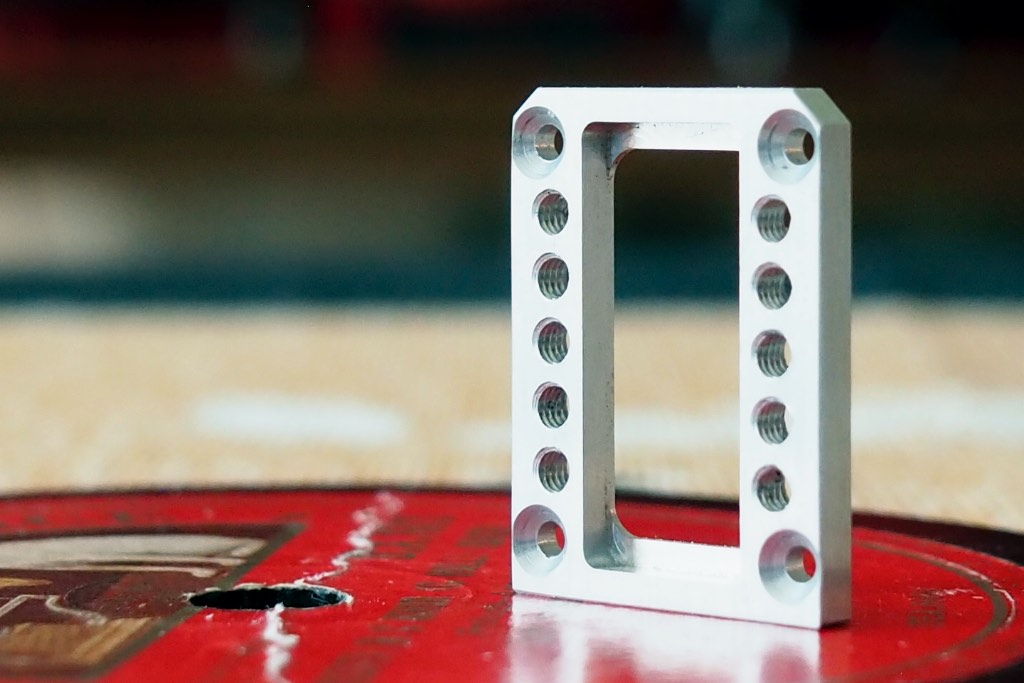
Aluminum cartridge shell top plate angle view of the top. Note the machined in shelf in the tonewood receptacle.
Ok, I hope I didn't overdo it too much with the shell photos, but I wanted to give you a feel for the level of quality and attention to detail that goes into the Audio MusiKraft aluminum cartridge shell.
It's an impressive design with an impeccable instrument-quality level of machining - it's a work of art!

Aluminum cartridge shell with oiled black walnut inserts and Denon DL-103 with top plate installed and screws ready to be tightened.
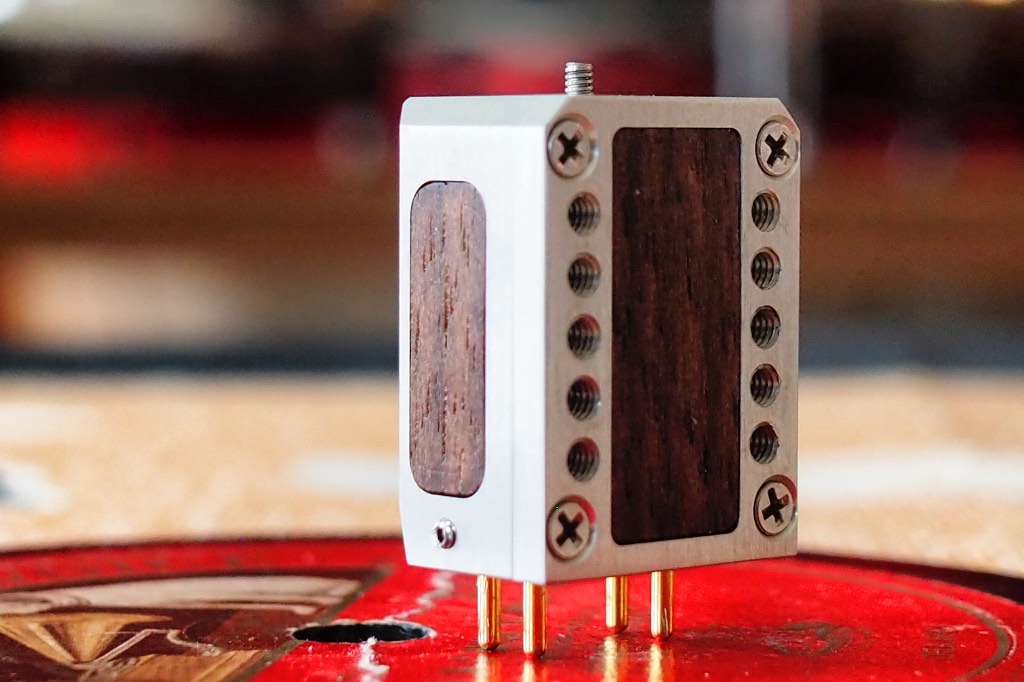
Aluminum cartridge shell with oiled black walnut inserts and Denon DL-103 with top plate installed and tightened down.
Now the Audio MusiKraft Denon DL-103 with its oiled black walnut tuning inserts in place is ready to mount on my Schick tonearm for a little listening!
Oiling the black walnut tuning inserts significantly changed their sound and musicality for the better.
On The Alternate Blues the muted trumpet was piercing and unpleasant with the black walnut inserts in their un-oiled state, and they were my least favorite among the four set of tonewood tuning inserts Guy sent me.
Following the oiling process they were very nearly the match for my favorite maple tonewood tuning inserts.
Engaging the micro-tuning screws so that they just touch the surface of the pole piece, and the inner cartridge chassis in the rear, improved tonality further.
Tensioning the micro-tuning screw an eighth-turn on the pole piece, and a quarter turn on the rear chassis micro-turning screws, improved natural tonality further ... to the point where I thought the Audio MusiKraft Denon DL-103 was sounding at least as good as the untreated maple tonewood tuning inserts, and maybe better.
That's quite a change in performance as a result of the oiling process!
Encouraged by the results I decide I wanted to try the same thing with the lime tonewood tuning inserts, but with a little twist of my own design on the treatment of the wood.
I noticed that on the Audio MusiKraft website that when you order tonewood tuning sets you can order them as untreated, oiled (+$4 USD), treated with white shellac (+$4 USD), treated with bees wax (+$10 USD), or lacquered (+$20 USD).
I have a blend of beeswax, lemon oil, and other natural oils, that's based on an 18th century cabinetmaker's recipe for conditioning, preserving, and protecting fine wood furniture. As you can see in the photo below, it's kind of thick and goopy.
When I used the blend on my Westminster Royal SE loudspeakers they not only looked & smelled great, they actually sounded better after I treated their cabinets with it.
So I thought I'd give it a try on lime tonewood tuning inserts and then give it a listen.
It'll probably be next weekend before I'll have a chance to try out the beeswax & oil treatment and report back
As always, thanks for stopping by, and may the tone be with you!




